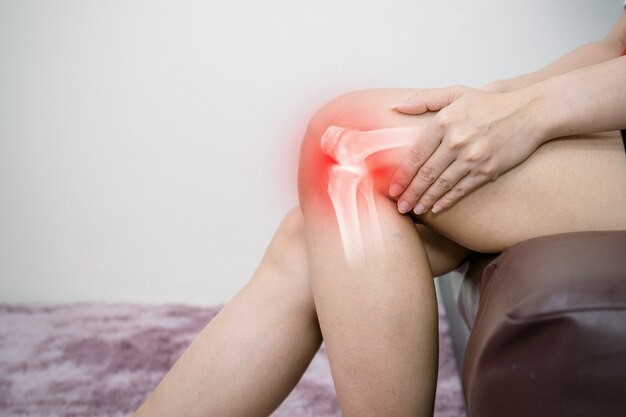In Nigeria and many parts of Africa, knee pain is a common health issue, often leaving individuals uncertain whether they’re facing a temporary problem or a chronic condition like arthritis.
While specific statistics for Nigeria are not as readily available as those from Western countries, the global prevalence of arthritis and knee pain suggests its significant impact; and the World Health Organization (WHO) acknowledges arthritis as a leading cause of disability worldwide.
This article aims to clarify the difference between general knee pain and arthritis, a crucial distinction for maintaining an active lifestyle. We’ll explore the defining symptoms and treatment approaches, drawing on expert advice to help you understand and manage knee pain effectively.
Understanding knee pain
Knee pain can result from a variety of causes – from a simple strain during your morning jog to the onset of arthritis. The knee is a complex joint, and as Healthline, a leading provider of health information, points out, it’s prone to injuries due to its structure and the weight it bears.
Common knee pain and causes
Common knee pain often arises from muscle strains, ligament injuries, or minor tears in the knee’s tissues. According to Mayo Clinic, an American nonprofit academic medical center, activities like running, jumping, or sudden direction changes can lead to such injuries. This type of pain is usually acute, meaning it comes on suddenly and is linked to a specific incident.
Symptoms may include:
• Sharp, localized pain
• Swelling and inflammation
• Difficulty bending the knee
• Pain that improves with rest
Arthritis in the knee
Arthritis, on the other hand, is a chronic condition. The World Health Organization (WHO) defines arthritis as an inflammation of the joints, and it can take many forms. The most common type affecting the knee is osteoarthritis, characterized by the wearing down of cartilage.
Symptoms of knee arthritis include:
• Persistent or recurring pain
• Stiffness, especially in the morning or after sitting for long periods
• Swelling that stays for longer periods
• Reduced range of motion
• A feeling of warmth in the joint
• Cracking or popping sounds
Harvard Health Publishing notes that arthritis pain tends to develop gradually and is often linked to joint use.
Statistics and prevalence
According to Medical News Today, arthritis is a leading cause of disability worldwide. The CDC reports that osteoarthritis affects over 32.5 million adults in the U.S. alone.
Treatment approaches
For common knee pain, rest, ice, compression, and elevation (RICE) are often recommended. Over-the-counter pain relievers can also be effective. Verywell Health, a trusted source for medical information, suggests that physical therapy can be beneficial in many cases.
In contrast, arthritis treatment might involve a combination of medications, physical therapy, and in some cases, surgery. Lifestyle changes such as weight loss and low-impact exercises are often recommended to reduce strain on the knees.
When to see a doctor
It’s important to consult a healthcare professional if:
• Pain is severe or persists for more than a few days
• There is significant swelling or redness
• You experience fever or other unusual symptoms
Prevention tips
Preventive measures include maintaining a healthy weight, staying active, and avoiding knee injuries through proper training and equipment.
Conclusion
Spotting the difference between common knee pain and arthritis is key to managing your knee health effectively.
While common knee pain is often acute and linked to a specific activity, arthritis develops gradually and tends to be chronic.
Understanding these differences ensures that you can seek appropriate treatment and maintain an active, healthy lifestyle.


